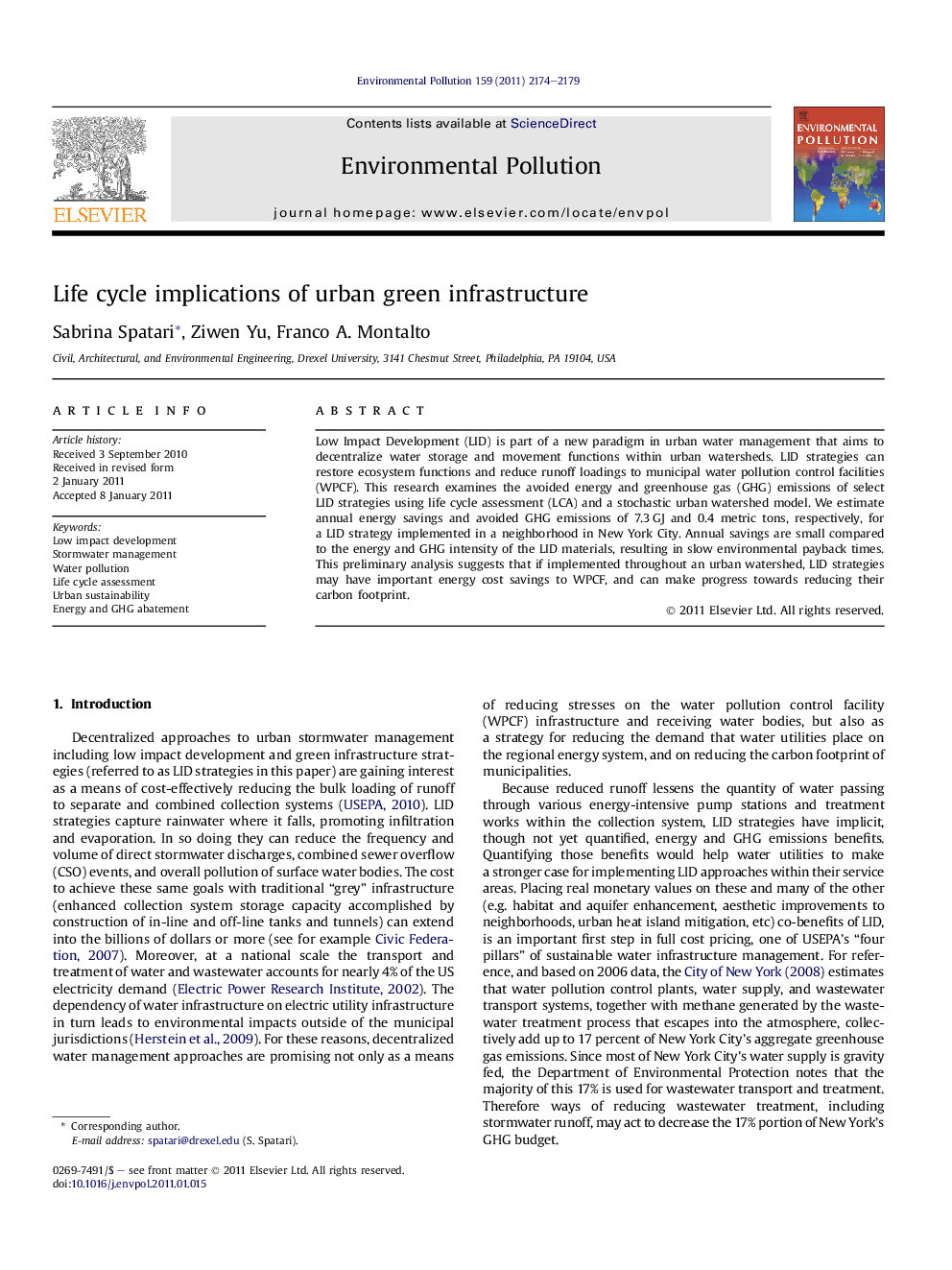| Article ID | Journal | Published Year | Pages | File Type |
|---|---|---|---|---|
| 4425212 | Environmental Pollution | 2011 | 6 Pages |
Low Impact Development (LID) is part of a new paradigm in urban water management that aims to decentralize water storage and movement functions within urban watersheds. LID strategies can restore ecosystem functions and reduce runoff loadings to municipal water pollution control facilities (WPCF). This research examines the avoided energy and greenhouse gas (GHG) emissions of select LID strategies using life cycle assessment (LCA) and a stochastic urban watershed model. We estimate annual energy savings and avoided GHG emissions of 7.3 GJ and 0.4 metric tons, respectively, for a LID strategy implemented in a neighborhood in New York City. Annual savings are small compared to the energy and GHG intensity of the LID materials, resulting in slow environmental payback times. This preliminary analysis suggests that if implemented throughout an urban watershed, LID strategies may have important energy cost savings to WPCF, and can make progress towards reducing their carbon footprint.
► LCA methods can identify environmental tradeoffs for urban low impact development. ► Energy and GHG payback time is sensitive to LID construction material choice. ► LCA of LID upscaled from street to watershed level is expected to be nonlinear.
